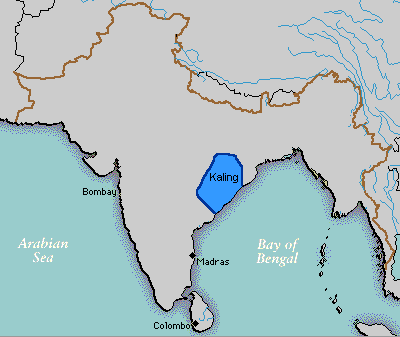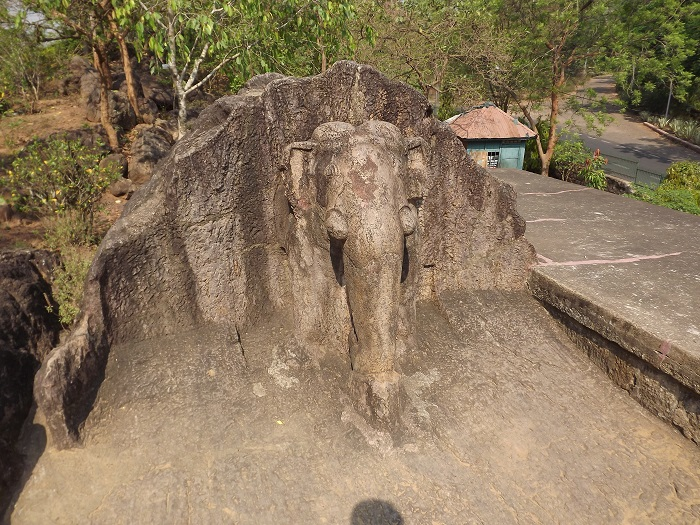

The Kalinga War is marked in history as the most devastating war ever fought. It was fought by none other than emperor Ashoka who was the most significant ruler of the Mauryan dynasty. He was the grandson of Chandragupta Maurya and the son of Bindusara of the Mauryan Empire.
The Mauryan empire took control over all of India except the Kalinga region. Kalinga state was ruled by the feudal Nanda Empire. It was located on the eastern side of India’s coastal area. After many failed attempts when emperor Ashoka became the King of Magadha, he went into a war in Kalinga to conquer it. It was the first and last prime battle fought by Ashoka as he got disillusioned with the aftermath of the war. The war took away countless lives. It was the bloodiest war ever fought in history which changed the perception of emperor Ashoka.
The three notable Mauryan emperors were Chandragupta Maurya, Bindusara, and Ashoka. During Chandragupta Maurya’s period, the Mauryan Empire expanded all over Modern India. The only independent state which could not be conquered was the Kalinga State on the East Coast near the modern state of Odisha. The state of Kalinga was ruled earlier by Nanda Empire until 321 BCE.
It became independent before the Mauryans came to power. Despite several attempts by Chandragupta Maurya and Bindusara Kalinga could not be recaptured under Maurya Empire. After some bloody fights among the brothers, Ashoka succeeded as an Emperor and vowed to conquer Kalinga.
The Kalinga state was comprised of numerous talented, peaceful, and skilled people. It was also a thriving and wealthy region with its powerful navy and various ports for trading.
As it was located on the East Coast, it was easier for them to travel to South-east Asia for developing trade ties. It is believed that the Kalinga state was considered as a threat to the Maurya Empire because it was in an advantageous position to interfere in the connection between Mauryan Capital Pataliputra and the Central Indian region. Kalinga also got control over the Bay of Bengal area which was considered another threat to Mauryans. It was also a matter of political prestige to the Mauryans who ruled all over India except Kalinga.
Ashoka tried to communicate but the King of Kalinga refused to surrender. As there was no option left, Ashoka waged a war against Kalinga, in the 8th year of his reign. Historians are not confirmed the starting year of the Kalinga War, but it got ended in 261 BCE.

It is believed by Historians that the Kalinga war broke out in the hills of Dhauli. Next to the Dhauli hills, the Daya river flows by. It is presumed that the Daya river(located in Odisha of modern India) was flooded with the blood of the casualties of the massacre. Almost 1,00,000 people lost their lives and 1,50,000 Kalinga warriors were held captive by Ashoka.
The Kalinga army was well equipped with 60,000-foot soldiers, 700 war-trained elephants, and 1000 cavalries. This military might of the Kalinga state still appeared inadequate compared to the Mauryan military. Mauryans had almost 60,000 soldiers, thousands of war-trained elephants, and almost 1700 war horses.
Still, the state of Kalinga went into the war with the Mauryans and put up a courageous fight and fought till their last breath. The Mauryans finally overpowered them with their mighty military force and defeated them. Ashoka’s dream to conquer Kalinga and annex it to the Mauryan empire came to fruition.
Despite winning the war with flying colours, emperor Ashoka could not get his head around the bloodbath he witnessed. Ashoka was completely devastated by observing so many lives lost and property destroyed.
He realized how his hunger for power blinded him so much that he went on plundering and destroying Kalinga. He wanted to rule the state of Kalinga, but there were hardly any people left to rule. After witnessing thousands of people deported and dead, the agony, bloodshed of war, and the plight of Kalinga, Ashoka was filled with grief and remorse. This event completely changed his heart. He became a follower of Buddhism and promised to follow the path of Ahimsa(non-violence)and Dhamma- Vijaya (win people with Dhamma).
This was the first and last major war fought by Ashoka. He then stopped the expansion of the empire through military advancement and adopted the new policy of ruling the empire with love, peace, non-violence, and harmony for 40 years.
Ashoka recorded his responses regarding the Kalinga war in his Edicts where he mentioned that 1,50,000 people and soldiers from both sides died in the war. His ideas of Dhamma were also carved in the rocks and pillars. He sent proponents to other countries to propagate ideas of Dhamma and preach Buddhism to promote a nonviolent style of living. His engraved Edicts can still be found in and outside of India.

The Kalinga war will always be marked in history as one of the bloodiest and most violent wars in history. Despite several attempts, when the independent state of Kalinga could not be annexed by the huge Mauryan Empire, emperor Ashoka took the vow to invade and conquer Kalinga. Although Kalinga had a strong army of its own, it was nothing compared to the Mauryan military. Thus, the Mauryans defeated Kalinga in a bloody battle. The whole state of Kalinga was ransacked and plenty of people died. This result shook emperor Ashoka who was devastated. The agony and destruction of Kalinga filled him with remorse and grief.
Then he decided to follow the path of Non-violence and Dhamma and propagated Buddhism. He then ruled the Mauryan empire for 40 years with peace, prosperity, and harmony. It is the only war in history that led the conquerer to give up his violent mode of fighting and ruling an Empire.
Q1. How did Ashoka come to power?
Ans. It is believed that, after the death of emperor Bindusara, his son Ashoka was chosen by the ministers of Bindusara as the king of the Mauryan Empire. After coming to power, Ashoka threw one of his brothers, Susima into a charcoal pit and then burned him to death. It is also believed that he executed 99 of his brothers afterward. Although researchers found out that he killed only 2 brothers of him and the younger one named Vitashoka refused to rule the empire and took up Buddhism.
Q2. How many Edicts were engraved by Ashoka? What was there in Ashoka’s Edicts?
Ans. There were 33 Edicts carved by Ashoka which can be found in today’s India, Bangladesh, Pakistan, Afghanistan, and Nepal.
Ashoka’s Edicts described his realizations, what was the reason behind his conversion to Buddhism, how he was trying to spread Buddhism in and out of modernday India, the moral and social perception of Buddhism, his works for society and the welfare of animals, his ideas regarding administration, his ideas about people’s behaviors towards each other, and his ideas about people’s behaviors towards religion.
Q3. How many categories of Edicts can be found?
Ans. Edicts were inscribed on rocks, stones, and pillars. There were four different types of Edicts based on their sizes and their medium. Sizes could be Major or Minor and medium could be Rock or Pillar. Minor Edicts were engraved before the Major ones. Similarly. Rock inscriptions came into being before Pillar inscriptions. Thus, there were four categories of Edicts − a)Minor Rock Edcts, b)Minor Pillar Edicts, c) Major Rock edicts, and d) Major Pillar Edicts.
Q4. What influences were there in Ashoka’s Edicts? What languages and scripts used in the Edicts were written?
Ans. In Ashoka’s Edicts inscription there were resemblances of Achaemenid inscriptions, Hindu–Arabic numeral system, Hellenistic inscriptions, and Indian epigraphy. Edicts were inscribed in three different languages, namely, Greek, Ashokan Prakrit, and Aramaic. The use of scripts in those languages was divided into four categories, such as Brahmi, Kharoshthi, Greek, and Aramaic.
Q5. What is Dhamma?
Ans. In Buddhism, Dhamma is the teachings of Buddha that talk about mastering the art of letting go of dissatisfaction and suffering which is named Dukkha in Buddhism. Buddha’s teachings were spread through mouths among his group of followers. It was not written anywhere for long. Following Dhamma, one can achieve enlightenment according to Buddha. It should be practiced daily to get the desired result.